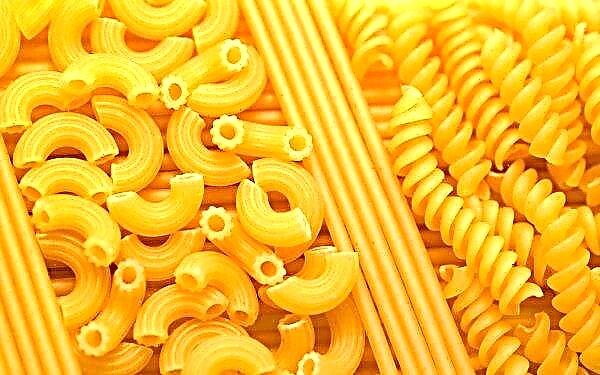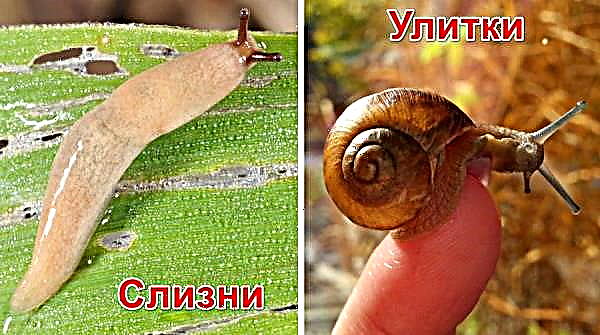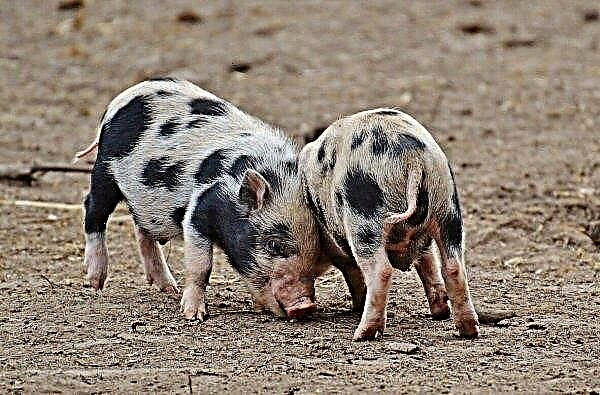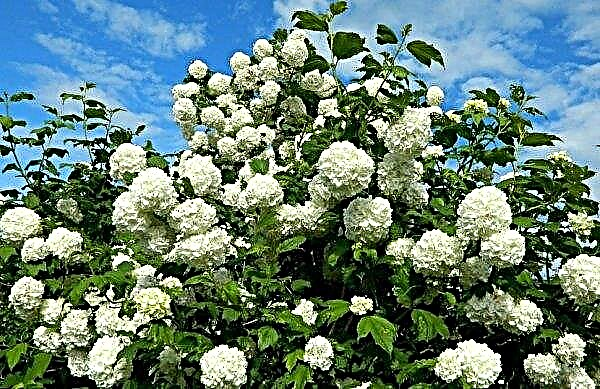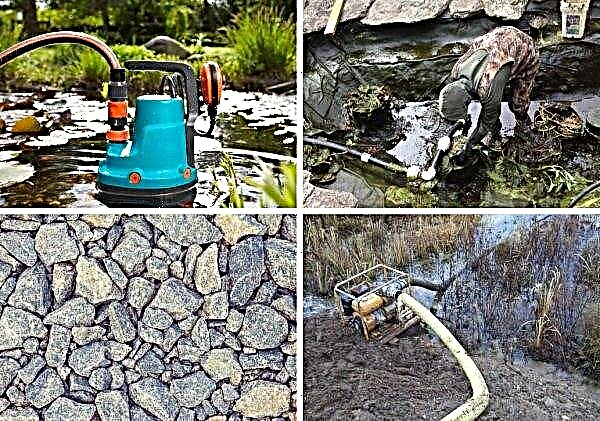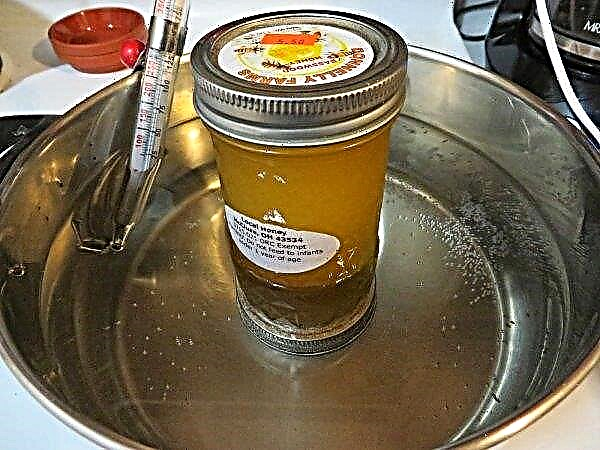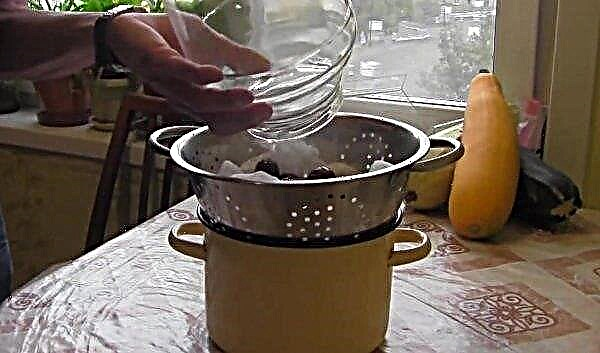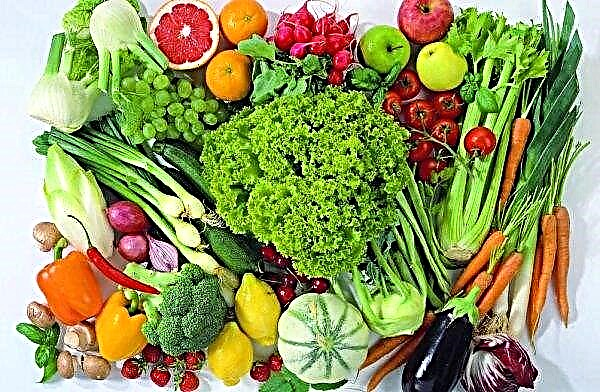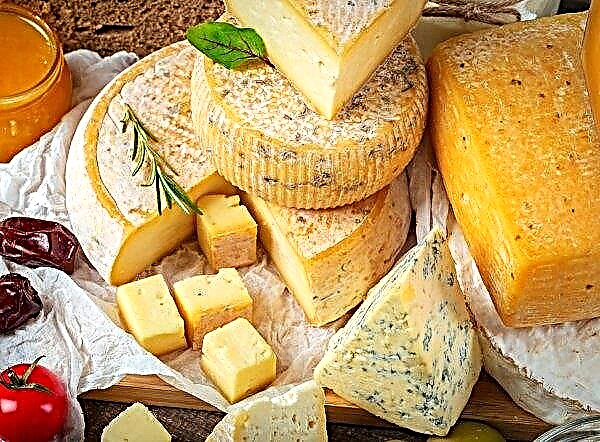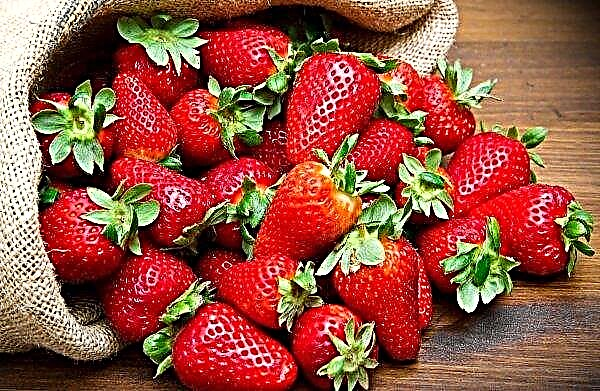Kuchin jubilee chickens are known to many farmers. Kuchins are universal birds that can satisfy any production needs for quality meat and eggs. Today there are those who do not know about the requirements for this breed, which seriously affects the productivity of the poultry farm. The overview below on what these hens are and how to properly care for them.
Origin history
The Kuchin jubilee is rightfully considered one of the most successful Russian and Soviet poultry breeds. Hybrids found on today's market were introduced relatively recently, in the first half of the 90s of the XX century. The official author of the breed was the world-famous poultry holding Kuchinsky, which is located in the city of Balashikha, Moscow Region. The breed became the receiver of practically destroyed during the Great Patriotic War of the Lebanese layer.
Did you know? Despite the fact that chickens were domesticated about 8-10 thousand years ago, their wild ancestors are found today (in Indochina, India, Indonesia, South China and the Philippines).
Work on the bird began back in 1947, but for several decades, geneticists have not been able to create the perfect bird. The resulting hybrids were characterized by low egg production. Forty years the leading genetics of the USSR tried to improve the breed. Everything ended by the end of the twentieth century with the release of a universal breed of meat and egg.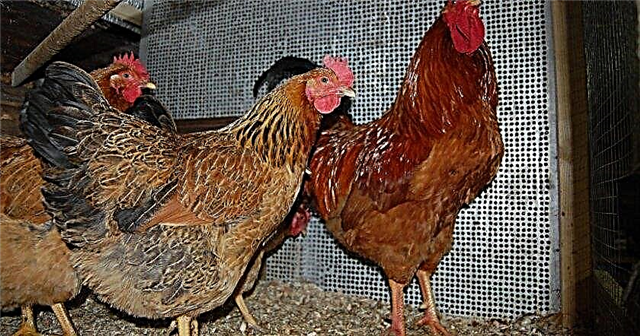 When selecting genetic material, breeders focused on donors not only with high productivity, but also with increased resistance to all kinds of infections. Therefore, the genetic material of the following breeds was taken as a basis:
When selecting genetic material, breeders focused on donors not only with high productivity, but also with increased resistance to all kinds of infections. Therefore, the genetic material of the following breeds was taken as a basis:
- Australorp;
- Liven
- Plymouth Rock;
- Rhode Island;
- New Hampshire.
Description and distinctive features of the breed
During the selection work, geneticists managed to create a bird, which absorbed the main distinguishing features of the original breeds. This made it possible to create stable external signs and characteristics that are not inherent in others. That is why jubilee hens Kuchin stand out from other common types of poultry.
Appearance
At the first acquaintance with the breed, most farmers distinguish its stately appearance. These hens are distinguished by a massive body and well-developed muscles. At the same time, they look more than proportionate and move no less gracefully than other relatives.
Characteristic features of the appearance of the Kuchinsky anniversary (table)
| Part of the body | Description |
| Head | Small, medium sized |
| Crest | Upright, tall and leafy, with at least 5 teeth (front always slightly shorter than the rear) |
| Beak | Bent down, strong and thick, moderate length |
| Neck | The length is medium, strong and massive, rounded, but flexible enough |
| Chest | Large, fleshy, with a large collar that reaches the shoulders |
| Stomach | Flat, not pronounced, rounded |
| Wings | Medium length, strong, fit snugly to the body. Folded horizontally |
| Tail | Medium in size, characterized by long braids and medium-sized steering feathers overlapping each other. A pronounced tail is observed only in roosters |
| Paws | Dense, medium length, well muscled |
| Plumage and color | The plumage is well developed, under the dense main feather is a thick layer of fluff. Its color is golden brown / light brown. In roosters, a slightly reddish hue of plumage is often found, on the tail are several black feathers. |
Important! Any modifications of the external characteristics of the rock described above are unacceptable and are a defect.
Character
Kuchinsky Jubilee inherited only the best features inherent in her distant relatives. This is a friendly, active and agile breed that loves to communicate with others. With free-range chicken will bring a lot of noise. She likes free space, so its absence can adversely affect the emotional state of the bird.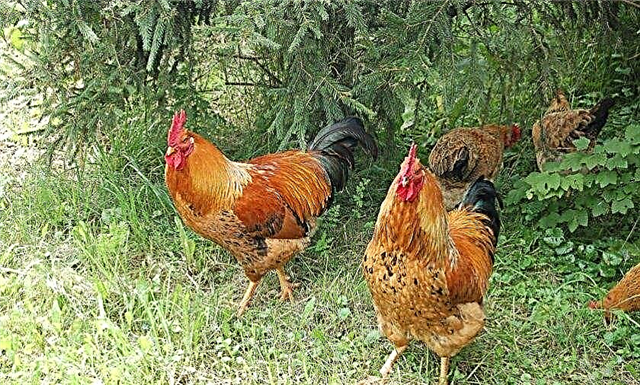 Another characteristic quality of Kuchin residents is called curiosity. They always show active attention to surrounding objects and living things. The roosters of the breed are true guards, they adequately monitor the order in the chicken coop, and also protect chickens from danger. Often this causes considerable difficulties for the owners, since often the roosters are actively aggressive towards the person. This is why breed maintenance requires compliance with general safety rules.
Another characteristic quality of Kuchin residents is called curiosity. They always show active attention to surrounding objects and living things. The roosters of the breed are true guards, they adequately monitor the order in the chicken coop, and also protect chickens from danger. Often this causes considerable difficulties for the owners, since often the roosters are actively aggressive towards the person. This is why breed maintenance requires compliance with general safety rules.
Did you know? In order to determine the freshness of chicken eggs, it is enough to dip them into a deep container with water. Fresh eggs will sink to the bottom, stale eggs will pop up or will stay in the water column.
Advantages and disadvantages
The main advantages of Kuchin residents include:
- ability to active growth and productivity (both in large enterprises and in small farms);
- instant adaptability to new living conditions;
- high productivity and versatility;
- increased chick survival;
- fast growth, growing up and gaining mass.
The negative sides of the bird are:
- excessive aggression of roosters;
- hereditary tendency to obesity;
- after five months, hens practically do not gain muscle mass;
- a sharp drop in egg production in the second year of life.
Home Content
Kuchintsy is considered one of the most unpretentious domestic birds, so without any difficulties they can be kept in any farm. In order for the bird to be healthy and give quality products, the farmer needs to create favorable conditions for it.
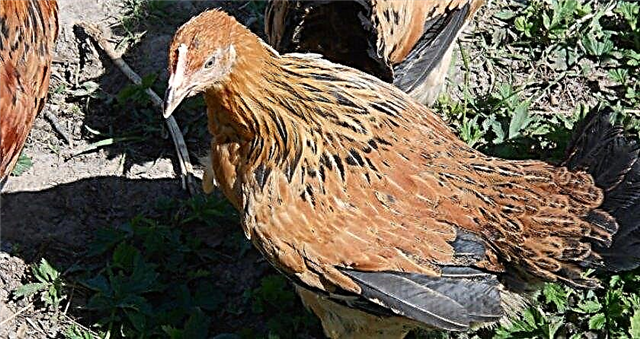
Chicken coop
The chicken coop is the number one task for keeping chickens of any breed. This structure makes it possible for birds to defend themselves from the cold and other adverse factors, and creates ideal conditions for a comfortable night's rest. The main requirements that are put forward to the structure are:
- the premises should be of appropriate size (1 chicken has at least 0.2-0.25 square meters of free space);
- at least 2 opening windows are provided in the chicken coop, providing high-quality ventilation;
- in the construction, a temperature optimum is allowed within + 21-25 ° C in the summer, and at least + 15 ° C in the winter;
- the walls of the chicken coop can be made of wood, brick or concrete, the roof - of any roofing materials (to choose from), the floor - exclusively wooden;
- on the floor there should be a flooring of straw, hay or sawdust (flooring thickness - 15-20 cm);
- additional lighting should be carried out in the chicken house in winter (in summer, natural light will be quite enough);
- halls for growing chickens should be with perches and nests.
The basic requirements for a roost in a chicken coop are simple:
- the construction should provide one bird with a landing space of 20-25 cm;
- make it from a wooden beam, the cross section of which is 4 x 5 cm (it is good to grind the surface and round the edges);
- equip perches in the far side of the chicken coop at different levels at a distance of about 40-50 cm from each other;
- fix the perch both stationary and with the help of removable joints, providing additional comfort when cleaning in the chicken coop.

The socket also has the corresponding requirements:
- made only of wooden materials;
- the bottom of the structure must be covered with straw (not less than 10 cm high);
- fix the nests in 3-4 tiers at a distance of 40-50 cm from each other (from the floor to the first tier a distance of at least 60 cm);
- its dimensions are 35 x 35 x 35 cm;
- one nest is equipped on average for 3-4 hens.
Important! Before cleaning the chicken coop, the bird should be transferred to a temporary premises or to a walking yard. This will help not only to simplify the procedure, but also to protect chickens from possible injuries or harm to cleaning products.
Walking patio
Walking patio is especially important for the Kuchin anniversary. With its help, the bird replenishes the deficit of motor activity, due to which it manages to keep the body in optimal tone. Free walks help activate metabolism, which has a positive effect on overall health and immunity. In addition, the walking yard is also important for meat products. Optimal physical activity helps the birds to develop musculature, which means that the quality of meat, its aromatic and flavoring properties increase. The most optimal place for a walking patio is considered to be a flat dry area near tall tree-like vegetation. The shadow on the site is considered one of the most important factors, since excessive sun is extremely harmful for chickens. If natural shade is not enough near the chicken coop, use a canopy made of fabric or other roofing materials.
The most optimal place for a walking patio is considered to be a flat dry area near tall tree-like vegetation. The shadow on the site is considered one of the most important factors, since excessive sun is extremely harmful for chickens. If natural shade is not enough near the chicken coop, use a canopy made of fabric or other roofing materials.
A fence made of plastic or metal mesh with a height of 2-2.3 m is installed around the perimeter of the courtyard. Any sharp elements inside the structure are unacceptable, since the bird may be injured. Saving on the space of a walking patio is not recommended. The walking area should provide at least 1 sq. M / individual of free space.
Feeding troughs, drinking bowls, zone baths
For optimal productivity, chickens need uninterrupted power. The feeder should be of low elongated shape with a depth and width of at least 10 cm. The length of such containers depends on the number of birds in the stock. The best option is considered feeders, where each individual has at least 10 cm of its length. Feeders are made from hardwood (metal is also possible). They must be resistant to any food and not emit harmful toxins during their operation. A few decades ago, shallow open containers or old feeders served as drinking bowls for chickens, but today many have abandoned them in favor of factory models. Their design does not allow the bird to spray water, which at times reduces the daily labor costs of care. Choose them relative to the number of birds in the stock.
They must be resistant to any food and not emit harmful toxins during their operation. A few decades ago, shallow open containers or old feeders served as drinking bowls for chickens, but today many have abandoned them in favor of factory models. Their design does not allow the bird to spray water, which at times reduces the daily labor costs of care. Choose them relative to the number of birds in the stock.
So, one drinker should hold no more than 5 liters of water, otherwise it will lead to its rapid pollution, and this is fraught with poisoning. Drinkers are placed near the feeders both in the house itself and on the walking yard. A prerequisite for a poultry farm is the presence of a zonal bath. It is needed not only for the entertainment of birds. Chickens often suffer from a variety of parasites, and a zonal bath helps them clear their body of lice and ticks.
Install the bath in the walking yard, on the opposite side of the feeder and drinking bowl. Any non-toxic and non-hazardous container can serve as a zone bath. Often it is made from dry, carefully sanded wood. The optimal dimensions of the bath are 120 x 70 x 20 cm. Such a box can accommodate 3-4 individuals at a time. The number of baths depends on the size of the stock (in most cases, no more than one bath is installed for 10 chickens).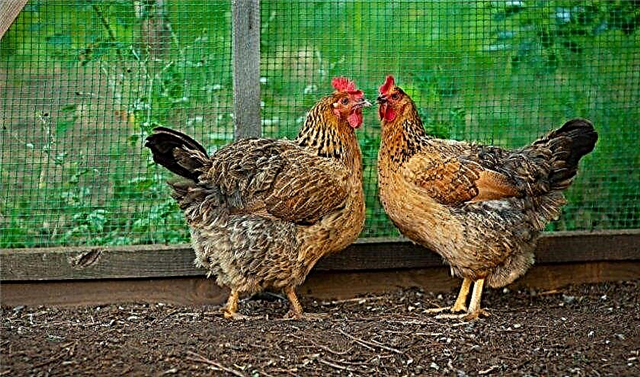
The beginning of molting and a break in egg production
The change of plumage is a natural physiological process inherent in both productive and decorative breeds of birds. In young chickens, molting takes place in three stages:
- at the age of 1-1.5 months - chickens acquire downy plumage, which replaces fluff;
- at 3 months of life - a young feather falls out in young animals, contour appears;
- in early or mid-spring - exclusively in chickens up to 1 year old.
Important! Slow and prolonged molting indicates a low productive potential of chickens, therefore, such individuals after molting are transferred to a separate herd (for slaughter).
In adult chickens, this process begins at a time when daylight hours are sharply reduced. Often this period falls in mid-autumn. Shedding is accompanied by a sharp decrease in egg production or a complete loss of the ability to carry eggs. The breed Kuchinsky anniversary it lasts 2-3 weeks, but in some cases it can be delayed up to 4-5 weeks.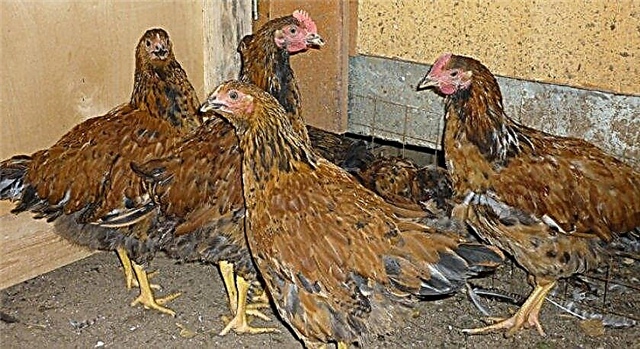 During molting, the hormonal background changes dramatically in Kuchins, this is a serious stress for the body. Therefore, the bird needs special care and additional attention. At this time, the poultry breeder must:
During molting, the hormonal background changes dramatically in Kuchins, this is a serious stress for the body. Therefore, the bird needs special care and additional attention. At this time, the poultry breeder must:
- provide enhanced nutrition with the addition of complex top dressings based on vitamins A, B1, B3, D and trace elements in the form of iodine, manganese and sulfur;
- improve the sanitary situation in the chicken coop;
- eliminate drafts and sudden changes in temperature in the place of keeping birds;
- establish artificial lighting in the house and provide chickens with daylight for at least 10 hours;
- provide wards with complete peace and quiet;
- avoid tactile contact with the livestock, as during molting this makes them unpleasant.
Herd replacement planned
Productivity at the Kuchin jubilee lasts up to 3 years, after which their egg production practically stops. The highest productivity of the breed is observed only in the first 1-1.5 years, therefore, the planned replacement of the herd should be carried out at least once every two years. For greater profitability, many large farms recommend rejuvenating the livestock annually.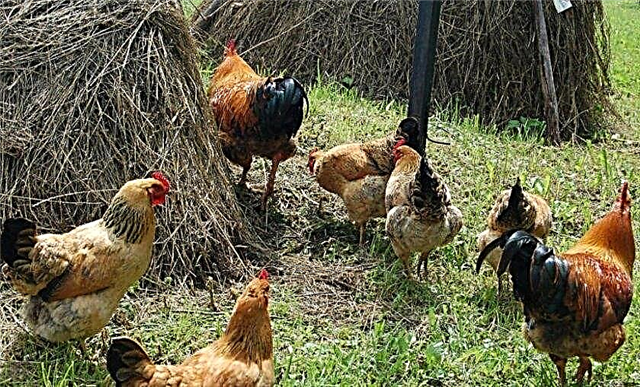 After the peak of egg production, you can successfully send part of the herd for slaughter and profitably sell meat products. Otherwise (at the age of 2 years or more) the chicken becomes old and loses its aromatic and taste qualities.
After the peak of egg production, you can successfully send part of the herd for slaughter and profitably sell meat products. Otherwise (at the age of 2 years or more) the chicken becomes old and loses its aromatic and taste qualities.
What to feed
Kuchinsky jubilee are considered one of the most unpretentious farm animals. They feed on any quality feed that exists on the farm. So that the content of this breed does not disappoint the farmer, a special diet should be created that favorably affects the growth and development of chickens, and therefore the quantity and quality of meat and egg products.
Adult chickens
For adults, the optimal regimen is three meals a day, it is based on the use of 130-150 kcal per day. To do this, the bird is given all kinds of mixers on whole grain of wheat, oats and the fruits of other fine-grained crops. Replace them with complex feed. Once a day, chickens need to eat a wet mash, which is prepared on the basis of chopped vegetables and root crops. Fresh grass must be present in the breed diet. It makes up for the deficiency of vitamins, which positively affects the overall health of the livestock. For the full development of the breed, all kinds of nutritional supplements are important. Without them, the eggshell will be excessively fragile, and the bird itself will have weak immunity. The most popular among supplements are:
Fresh grass must be present in the breed diet. It makes up for the deficiency of vitamins, which positively affects the overall health of the livestock. For the full development of the breed, all kinds of nutritional supplements are important. Without them, the eggshell will be excessively fragile, and the bird itself will have weak immunity. The most popular among supplements are:
- table salt;
- shell rock;
- a piece of chalk;
- limestone;
- feed phosphates;
- dried lake silt;
- wood ash;
- bone and meat and bone meal.
Important! The portion of feed for chickens should be strictly limited. Kuchinsky jubilee are able to eat food even when fully fed, which will certainly lead to obesity.
Chickens
In the first week of life, the young offspring of Kuchin are fed with crushed boiled egg, boned in semolina. Young animals should be given food every 2 hours, with a night break of 6-7 hours.From the second week, such a diet is enriched with chopped vegetables and root vegetables, as well as boiled or dry millet. By the third week, the number of feedings of young animals is reduced to 6 per day, after which cereals are additionally introduced into their diet. It is useful to teach chickens to food additives, bone meal, crushed fish or cottage cheese are introduced into their diet. From this moment, the boiled egg is gradually removed from the diet, replacing it with more adult and energetically valuable crops. From the 46th week, young animals are completely transferred to adult nutrition and the corresponding regimen, including the use of whole grains and all kinds of nutritious mixes.
It is useful to teach chickens to food additives, bone meal, crushed fish or cottage cheese are introduced into their diet. From this moment, the boiled egg is gradually removed from the diet, replacing it with more adult and energetically valuable crops. From the 46th week, young animals are completely transferred to adult nutrition and the corresponding regimen, including the use of whole grains and all kinds of nutritious mixes.
The Kuchinsky Jubilee is one of the most productive and modern poultry breeds known outside of Russia. It makes it possible to obtain high-quality meat and egg products, characterized by excellent taste characteristics. The breed is considered quite unpretentious. To achieve maximum productivity from it, it is necessary to create optimal conditions of detention, including a balanced diet.

